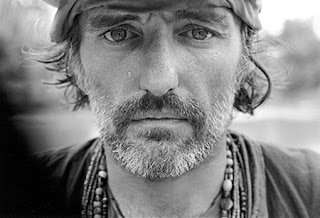 Shot on a white seamless the background and drop shadow are added in post.
Shot on a white seamless the background and drop shadow are added in post.The Kaboodle holiday card:
 Climbing a sketchy ladder is also in my skill set.
Climbing a sketchy ladder is also in my skill set.
 Tylara. North Park. San Diego, Ca.
Tylara. North Park. San Diego, Ca. Chloe. San Diego, Ca.
Chloe. San Diego, Ca. Megan. Rancho San Antonio Open Space. Los Altos, Ca.
Megan. Rancho San Antonio Open Space. Los Altos, Ca. Greta. Mirian Bear Regional Open Space. San Diego, Ca.
Greta. Mirian Bear Regional Open Space. San Diego, Ca. Corinna. Wilder Ranch State Reserve. Santa Cruz, Ca.
Corinna. Wilder Ranch State Reserve. Santa Cruz, Ca.



 These overcast conditions taught me a few things. There is a general agreement that a light cloud cover gives a softer ( more flattering ) light by cutting and diffusing the suns direct rays. My problem was that this was not a 'light overcast', this was a 'doom and gloom with chances of showers' kind of overcast.
These overcast conditions taught me a few things. There is a general agreement that a light cloud cover gives a softer ( more flattering ) light by cutting and diffusing the suns direct rays. My problem was that this was not a 'light overcast', this was a 'doom and gloom with chances of showers' kind of overcast.









 Click to enlarge. 1680x1050px for a desktop background. Otherwise I would not have made this so stylized.
Click to enlarge. 1680x1050px for a desktop background. Otherwise I would not have made this so stylized.





 The 'magic board' was basically a product of my poorness. To the untrained eye it might look like a 20"x30" foam presentation board from CVS with some tin foil gaff taped to it. And, well, that's basically what it is. I've actually got some shiny paper product rather than foil, but its probably comparable to the 'soft' side of tin foil. ( Tip: crumple your foil prior to application for more diffusion )
The 'magic board' was basically a product of my poorness. To the untrained eye it might look like a 20"x30" foam presentation board from CVS with some tin foil gaff taped to it. And, well, that's basically what it is. I've actually got some shiny paper product rather than foil, but its probably comparable to the 'soft' side of tin foil. ( Tip: crumple your foil prior to application for more diffusion )




 Jared Diamond's 525 page epic, Collapse, was published in 2005 and has become more relevant every year since. The book is basically a chapter by chapter case study of past civilizations ranging from Easter Island to the Greenland Norse, explaining how each of their 'collapses' was highly correlated to the mismanagement of natural resources.
Jared Diamond's 525 page epic, Collapse, was published in 2005 and has become more relevant every year since. The book is basically a chapter by chapter case study of past civilizations ranging from Easter Island to the Greenland Norse, explaining how each of their 'collapses' was highly correlated to the mismanagement of natural resources. I hadn't met Carolyn prior to the wedding so I think I was possibly even more shocked than everyone else at how beautiful she looked. Kevin was looking pretty sharp himself in his Army Officer's uniform.
I hadn't met Carolyn prior to the wedding so I think I was possibly even more shocked than everyone else at how beautiful she looked. Kevin was looking pretty sharp himself in his Army Officer's uniform.
 This one ( above ) is an early attempt at an HDR, but I think it still looks a little overblown. Too much detail in the grass perhaps?
This one ( above ) is an early attempt at an HDR, but I think it still looks a little overblown. Too much detail in the grass perhaps? Carolyn and Kevan were possibly the most laid back couple I've ever worked with. It was good to see people enjoy their wedding day so thoroughly without worrying about any of the logistics.
Carolyn and Kevan were possibly the most laid back couple I've ever worked with. It was good to see people enjoy their wedding day so thoroughly without worrying about any of the logistics.